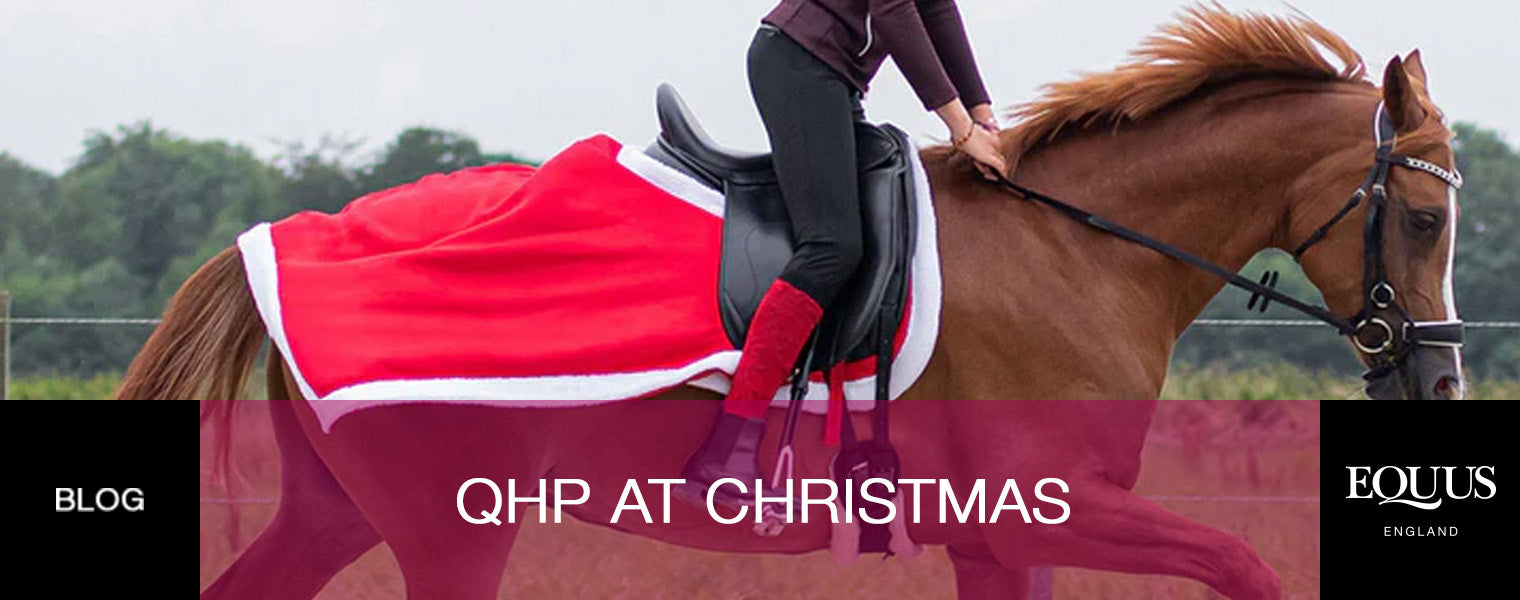QHP at Christmas
Mollory Yates

'Tis the season to embarrass your horse by dressing him up in a festive costume. There’s nothing better than getting in the Christmas spirit at the yard!
Dress your horse up and get out your camera. Turn your horse into an elf, a reindeer or Santa himself. Choose from head collars, saddle pads, bridle charms or an exercise sheet and there’s even a matching hat cover for you. It doesn’t get more fun than this!
Father Christmas
Father Christmas, also known as Santa Claus, Saint Nicholas, Saint Nick, Kris Kringle, or simply Santa, is a legendary character originating in Western Christian culture. He dates back as far as 16th century in England during the reign of Henry VIII, when he was pictured as a large man in green or scarlet robes lined with fur. He was said to bring children gifts during the late evening and overnight hours on Christmas Eve of toys and candy or coal or nothing, depending on whether they are "naughty or nice". His jolly appearance now typifies the spirit of good cheer at Christmas, bringing peace, joy, good food and wine and revelry.
The Reindeer
In traditional festive legend and popular culture, Santa Claus's flying reindeer are said to pull a sleigh through the night sky to help Santa Claus deliver gifts to children on Christmas Eve.
The reindeer were the invention of poet Clement Clark Moore who created traditional story as a poem for his daughters. Originally published anonymously as he was concerned it would taint his reputation as a Professor of Oriental and Greek Literature, as well as Divinity and Biblical Learning.
Santa has 8 reindeer called: Dasher, Dancer, Prancer, Vixen, Comet, Cupid, Donner, and Blitzen. Rudolf was added later in 1939 by Robert May. May worked in what would now be called the Marketing Department of Montgomery Ward, a department store chain second only to Sears as America’s largest retailer. Every year, they purchased and gave away free Christmas colouring books, but they decided that year to create their own. They gave the task of writing it to May with the instructions: make it about an animal. The popularity of May’s storybook “Rudolph the Red-Nosed Reindeer” and the 1949 Christmas song "Rudolph the Red-Nosed Reindeer" has resulted in Rudolph often being included as the ninth character.
The Christmas Elf
Do you know where the Christmas Elf originates from? Read on to find out more about this diminutive, little character that has been linked to Christmas for over 200 years.
The origins of the elf are said to have been derived from Norse mythology. The elf character is most likely to have combined this Norse legend with other Scandinavian and Celtic cultures and myths regarding elves, fairies, and nature spirits.
Elves became linked with Santa Claus in literature as early as 1823 in a poem "A Visit from St. Nicholas," better known today as "The Night Before Christmas." This poem by Clement Clark Moore, refers to Santa Claus as a "jolly old elf." With the elf-Christmas link established, other writers began to get creative with the idea.
This image of the elves in the workshop was popularized by Godey's Lady's Book, with a front cover illustration for its 1873 Christmas issue showing Santa surrounded by toys and elves with the caption "Here we have an idea of the preparations that are made to supply the young folks with toys at Christmas time".
Modern Christmas tradition holds that a horde of elves works throughout the year in Santa's workshop at the North Pole making toys and taking care of the reindeer.
Usually depicted as clad in green or red with large, pointy ears and wearing pointy hats, in English-speaking cultures, the Christmas elf is affectionately known as “Santa’s Little Helper” who help to prepare for his whirlwind, worldwide sleigh ride to homes on Christmas Eve.








